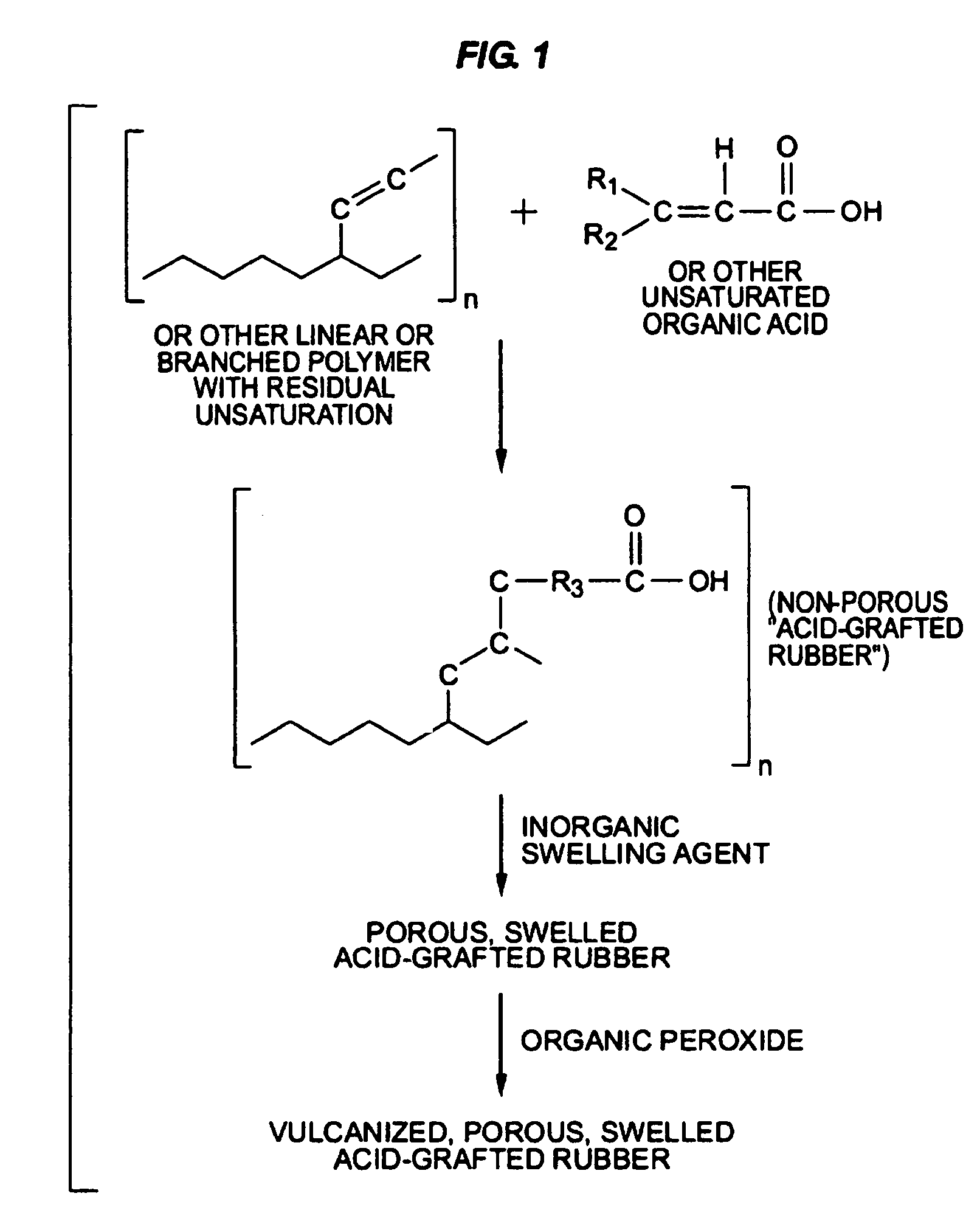Swellable elastomer-based apparatus, oilfield elements comprising same, and methods of using same in oilfield applications
a technology of swellable elastomers and oilfield elements, which is applied in the direction of water installations, well accessories, sealing/packing, etc., can solve the problems of not being able to resist oil swelling in oil, many commonly used elastomers exhibit poor resistance to oil swelling, and hydrogel-containing swellable polymers do not possess long-term physical integrity, etc., to achieve good water- and/or oil swelling of oilfield elements, and increase the effect of cost-
- Summary
- Abstract
- Description
- Claims
- Application Information
AI Technical Summary
Benefits of technology
Problems solved by technology
Method used
Image
Examples
examples
[0138]As stated earlier, one objective of the present invention was to develop elastomeric compositions that swell but do not disintegrate upon long term exposure to water and water based fluids, and methods of making such materials. FIG. 12 shows photographic comparison of an acid-grafted rubber consisting of sodium carbonate before exposure to any fluids; after exposure to Kerosene for 24 hours at room temperature; and after exposure to water at 100° C. for 24 hours. The rubber consisted of 30 phr of maleic acid, 30 phr of sodium carbonate and 1.5 phr of 40% dicumyl peroxide on an inert carrier. It is observed that the addition of soda ash significantly enhances the degree of swelling compared to the hydrogel-based rubber and acid-grafted rubber without soda ash. Swelling of 150 volume percent was observed for EPDM-MA elastomer after aging 24 hours at 100C in kerosene (top sample shown in FIG. 12), and a separate sample aged for 24 hours at 100C in water (bottom sample in FIG. 12)...
PUM
| Property | Measurement | Unit |
|---|---|---|
| length | aaaaa | aaaaa |
| thickness | aaaaa | aaaaa |
| melting point | aaaaa | aaaaa |
Abstract
Description
Claims
Application Information
 Login to View More
Login to View More - R&D
- Intellectual Property
- Life Sciences
- Materials
- Tech Scout
- Unparalleled Data Quality
- Higher Quality Content
- 60% Fewer Hallucinations
Browse by: Latest US Patents, China's latest patents, Technical Efficacy Thesaurus, Application Domain, Technology Topic, Popular Technical Reports.
© 2025 PatSnap. All rights reserved.Legal|Privacy policy|Modern Slavery Act Transparency Statement|Sitemap|About US| Contact US: help@patsnap.com



